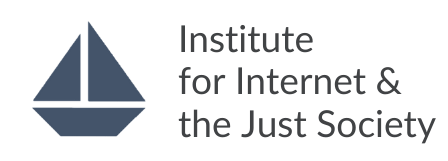TECHNOLOGY REGULATION
The Never-Ending Story of Regulatory Challenges
By Dr. Dusan Pavlovic
August 30, 2020
The exponential growth of emerging technologies generates many benefits but also creates many challenges including those that relate to their regulation. In general, regulation is a set of rules created to control the way something is done, or the way people behave. Planning and the use of technologies substantially depend on the regulation. However, regulation of any innovation has never been an easy task. The fact is that subjecting new technologies to the existing legal norms and other sources of regulation is a challenge. Thus, it is not wrong to raise doubts about the effectiveness of conventional ways of regulation. For that reason, the careful selection of regulatory techniques is necessary when regulating emerging technologies.
The regulatory technique describes the processes of the creation of the regulatory framework. There is no universal guidance on how to create a regulatory framework. Nevertheless, the phases of its development are perceivable. The first step in this process usually relates to the determination of regulatory purposes (e.g. protection of vulnerable categories of the population, preservation of socio-economic order, ensuring the legal certainty, allocation of responsibilities). The following step is about the analysis of the problem and setting up of the hypotheses that could serve for problem-solving. In the advanced phases, it is necessary to investigate the hypotheses, and to reject or accept them. It is desirable to base the decision on scientific evidence. The last phase is about the creation of the framework and its announcement. The regulatory framework might exist in the form of mandatory legislation, international or supranational law, Soft Law, recommendations, or in the shape of other means.
Between law and society
Common sense might lead us toward the conclusion that regulation of technologies forms the triangle of law, technology, and society. This is not ultimately a wrong conclusion. However, this triangle is composed of complex, and to a certain extent unusual structure.
There are many sources of law that are ‘technology-neutral’ but they regulate technologies. Also, there are many opinions and stances about the notion of technology-neutral regulation. Notwithstanding conflicting opinions about this concept, it might be said that the technology-neutral regulation refers to the set of regulatory sources that regulate the effects of technology, and not the technologies themselves.
Also, this kind of regulation does not hinder the development of technology. It provides a sustainable legal framework but sufficiently flexible to preserve its applicability to the effects of various technologies. However, it seems that the dynamic development of technologies might stay unregulated if we use technology-neutral regulation as the exclusive source of regulation. Therefore, the real challenge is to strike a balance between the effects of technology-neutral regulation and maintaining legal certainty.
The legal certainty is a principle that enables an individual to predict the application of law and potential sanctions if the law is violated. We are coming to the point when it would be legitimate to ask what the law really is. The most frequent perception about the law is related to a set of norms prescribed by legislative acts, bylaws, and court decisions. This understanding, although not incorrect, seems incomplete. Namely, we should not neglect the relationship between law and (for instance) ethics when we try to grasp what the law really is. Without ethical foundations, the concept of the law is almost meaningless. Therefore, every legal norm is supposed to have its ethical basis and it is the case also with legislative acts, bylaws, and court decisions. So, do we need to create a positive law with ethical foundations when we tend to regulate something? It would not be wrong to say that ethical discourse should be taken into consideration. However, positive law is not a necessary element of regulation. The regulation of technologies in the last two decades has confirmed that. There is a well-known practice of protecting intellectual property rights through ‘digital rights management’ or protecting the secrecy of communications through encryption. These cases are examples of the regulation of technologies through regulation by technologies. Therefore, the absence of positive legal norms does not necessarily result in a lack of regulation.
Between society and values
The prevalent system of values in a society depends on inter alias dominant ideology and generally accepted ethical principles. The ideology and ethic affect the autonomy of will, individual freedom, responsibility, dignity, equality, or protection of personal privacy. Thus, the treatment of human rights and freedoms is strongly linked with prevalent ethical values. Although the role of ethical values is very often underestimated in the regulatory process, the values are an indispensable part of the regulatory process. It comes as no surprise that regulations are very often discussed, analyzed, or even contested from the perspective of essential values in society. Moreover, a public debate is a regular phase in democratic societies when a new law is created and adopted.
Protection of human rights and freedoms must coexist with regulation, including regulation of technologies. Human rights and freedom are part (or at least, should be) of a system of values that places the protection of individuals, the rule of law, and democratic principles in the central focus. In this way, the system of values is supposed to protect individuals from unjustifiable intrusion in personal privacy, it should guarantee that autonomous robots will not endanger someone’s life or flying drones will not cause chaos in the sky and jeopardize air traffic.
In other words, having the protection of human rights and freedoms as a pivotal factor of regulation should ensure that the development and use of technologies are not formed to provoke adverse consequences to citizens and society.
The fact is that socio-cultural and political patterns are different in Japan, China, the United States, Europe, or Africa. Clearly, these variations create systems of values that differ among societies.
Therefore, there is a need to consider an appropriate level or a forum for the creation of a regulatory framework. For that reason, the regulation might be created on an international level, supranational level, on a federal or state level. Each level (and forum) generates the applicable system of values and subsequently forms the regulation that protects human rights and freedoms in a specific way.
Between values and time
The technology may be at the beginning of its development, or it may represent a certain prototype that may never be put in serial production. Also, technology might be in the testing phase, or it may be available at a market where it is freely offered and used. The development of emerging technologies is not immune to negative and positive perceptions and results concerning their productivity. It is obvious that the dynamic of technological development is very high. The high dynamic increases productivity and/or forms rooms for new innovations. There is nothing wrong with that.
If we consider the Gartner’s Hype Cycle as the blueprint for maturing of technology, we may extract several phases of the development. Gartner believes that after the public presentation of an innovation trigger, general attention influences the creation of a public perception that has high expectations from an innovation. However, such expectations are often exaggerated and when they reach the ‘Peak of Inflated Expectations’ they usually fall down to the ‘Trough of Disillusionment’. At that moment, the expectations about innovation are usually underrated. Afterward, the perception of and expectations are formed on a realistic basis. Thus, innovation slowly takes a stable place on the so-called ‘Plateau of Productivity’. Of course, positioning on the Plateau of Productivity requires a flow of time.
The different phases of maturing and dynamics of the development substantially influence the regulation of technologies. The right moment for regulating technologies is the subject of scientific and public discussion for several decades. This problem was addressed almost 40 years ago by David Collingridge in his book - Social Control of Technology.
Collingridge presented his dilemma regarding the moment when technologies should be regulated. He presented two regulatory approaches. According to the first one, technologies should be regulated at an early stage of their development. The second approach involves the regulation of technologies at a later stage of development and during the implementation of technologies.
Both approaches have certain advantages and disadvantages. Namely, the first approach supports the conventional understanding of the rule of law and the legal certainty (or at least creates their illusion). However, the regulation at an early stage could be pointless due to many difficulties related to the application of the regulation. Also, there is a danger that having a legislative framework at the early stages may slow down the further development of technology. If technologies are regulated at later stages, then the proposed regulatory measures can be based on empirical evidence rather than assumptions. Thus, the regulatory framework should be more meaningful and applicable. However, the disadvantage of this approach might be found in the potential for occurring undesirable social consequences as the result of regulatory/legislative vacuum in the period from the occurrence of an innovation trigger till the stable existence of technology at the ‘Plateau of Productivity’.
Read More


Watch Our Episodes





